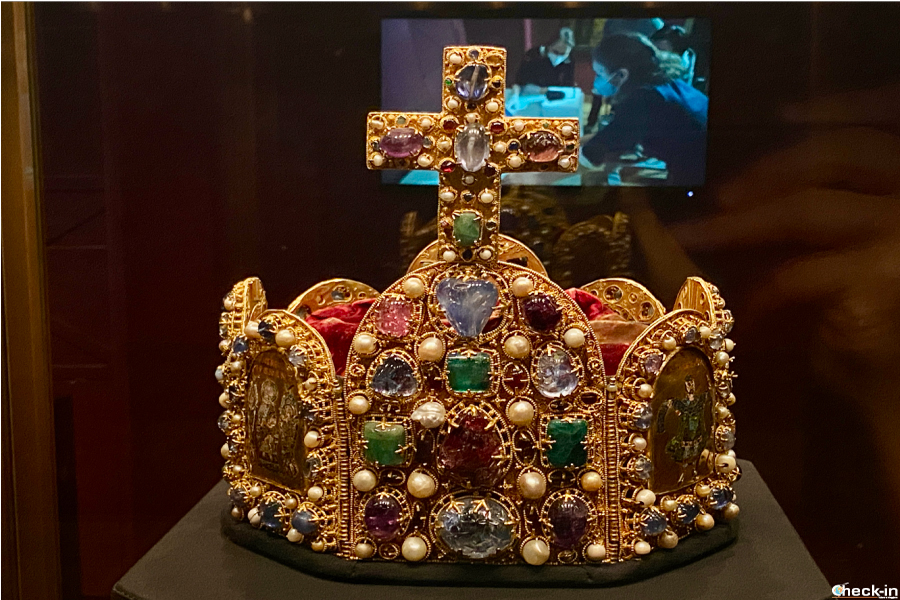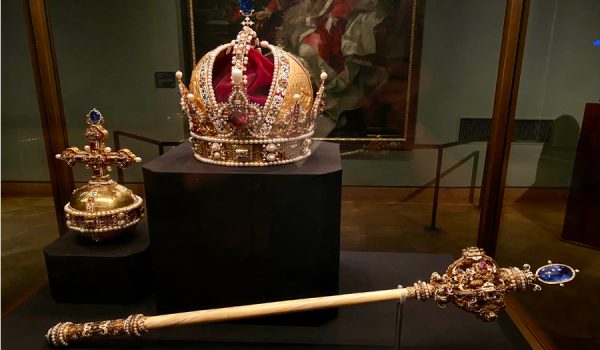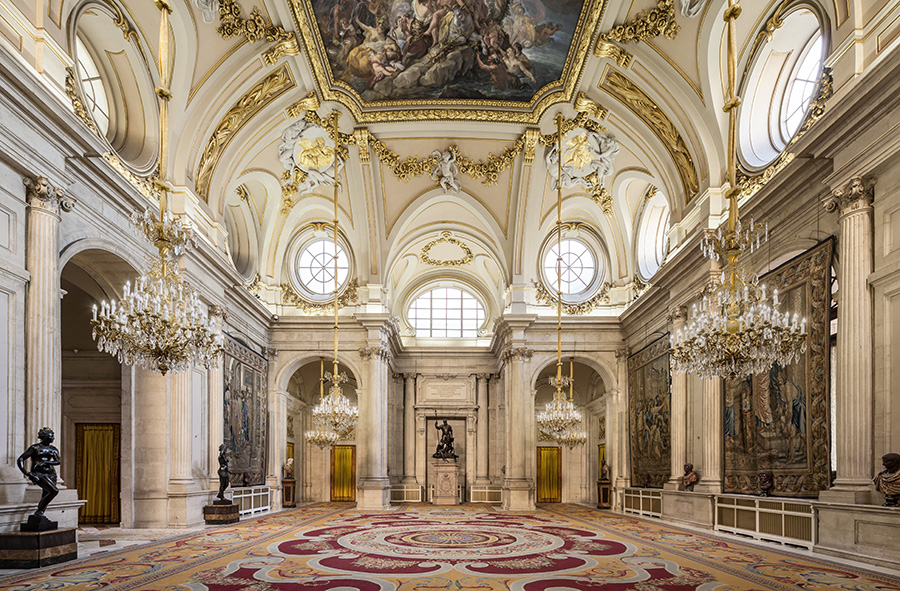Vienna’s Imperial Palace, the Hofburg, has been the center of Austrian power for more than six centuries. It was in fact the residence of the Habsburgs, one of Europe’s most important royal families that throughout the history occupied the throne of the Holy Roman Empire and territories that today correspond to nations such as Italy, Hungary, Spain and Portugal.
Among the places of interest that can be visited in the Hofburg is the Imperial Treasury, a symbol of the power the Habsburgs had in Europe for more than a thousand years.
The rooms hold the main collection of medieval royal objects: crowns, banners, sacred vestments, jewelry, priceless artifacts and some “curious” items related to the unicorn and even the Holy Grail.
Imperial Treasury of Vienna visit: location, hours, and tickets
The museum – in German is called Kaiserliche Schatzkammer – overlooks the Swiss Courtyard (Schweizerhof), in the oldest wing of the Hofburg complex. You reach it by passing through the entrance to the Imperial Apartments of Sissi and the adjacent inner courtyard.
For those arriving by public transport, the most convenient options include the metro (lines U2-U3) and tram D. From Stephansplatz and St. Stephen’s Cathedral in Vienna, you can easily walk there in about fifteen minutes.
Opening hours are from 9 am to 5:30 pm, and it is closed on Tuesdays.
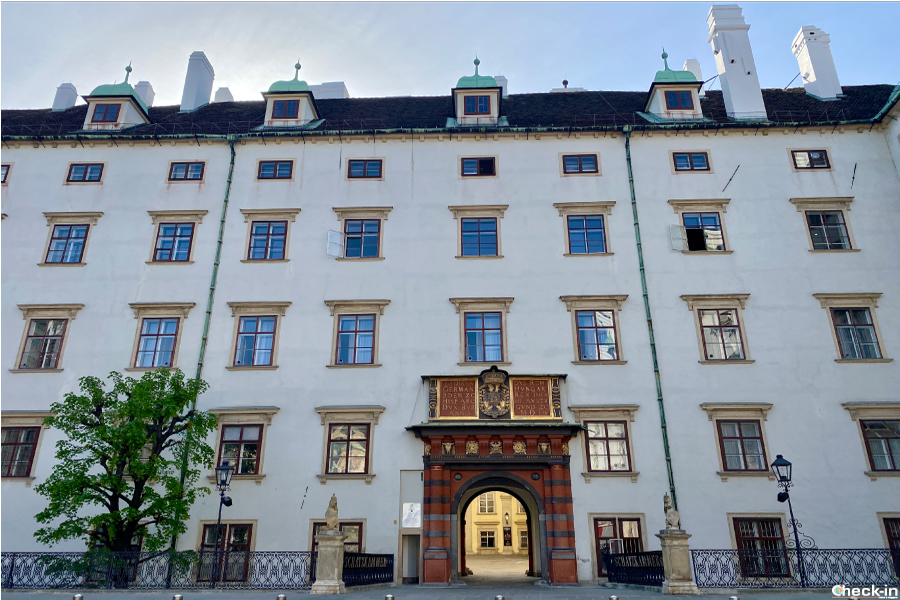
Prices (updated May 2024) are as follows:
- adults, €16
- over 65 and students aged 19-25, €12
- Vienna City Card holders, €15
Entry is free for children under 19 and with the Vienna Pass. Audio guides can be rented on site.
I purchased my entrance ticket on the partner website Tiqets, thus enjoying skip-the-line access.
It is also possible to buy a “combined ticket Imperial Treasury + Art History Museum“. The second place, the Kunsthistoriches Museum, was inaugurated in 1891 and is one of the oldest and richest museums in the world.
What you need to know about the Imperial Treasury
The collection as it is seen today is the result of the acquisition of documents and valuable objects carried out by the various emperors who succeeded one another on the Habsburg throne.
This process started at the beginning of the 14th century and only during the reign of Leopold I (17th-18th century) there was the first detailed inventory of the objects preserved in the wing of the Hofburg designed specifically to house this heritage.
During the Napoleonic Wars, for security reasons the treasures of the Holy Roman Empire kept in Nuremberg and Aachen were transferred to Vienna. With the proclamation of the Austrian Empire in 1804, the Habsburg coat of arms from the beginning of the 17th century became its new official symbol as the Holy Roman Empire no longer existed.
Imperial Treasury of Vienna: what to see
The visit, which in my case lasted over 2 hours, starts from the early years of the Habsburg monarchy.
From 1282 its power will expand towards the hereditary lands including some portions of territory of present-day southern Germany, Italy, Slovenia, and Croatia. In 1526, Hungary and Bohemia will be added.
Among the numerous artifacts on display, there are some that stand out for their artistic value and historical significance and are appropriately highlighted. In the following lines, I will focus on those that impressed me the most.
This is the case of the crown of the Holy Roman Empire that Rudolf II of Habsburg had made for himself in 1602. Later on, it will become the official symbol of the Austrian Empire. In addition to the crown, scepter, and globe, other elements were added in 1830 for Francis I of Austria, such as the imperial mantle.
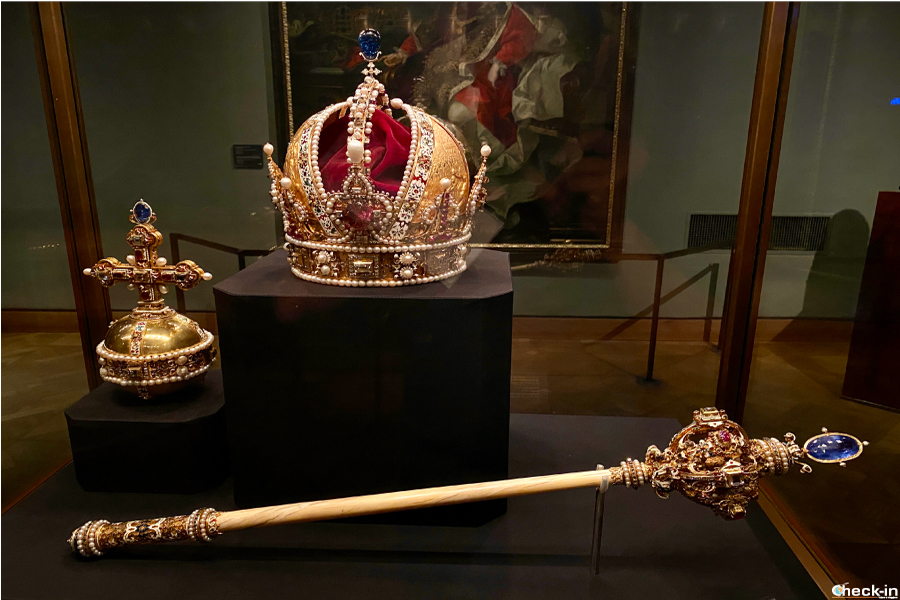
Speaking of Italy, the Lombardo-Veneto Kingdom was established by the Congress of Vienna after Napoleon’s definitive defeat. The two capitals, Milan and Venice, were placed under the control of the Habsburgs and Emperor Ferdinand I. In 1838 he was crowned sovereign of the new state, but his reign lasted not too long due to the revolts that would later lead to the unification of Italy.
For this reason, only the mantle and the sword of the coronation have been preserved in Vienna, while the Iron Crown is now located in the Theodolinda Chapel of the Monza Cathedral.
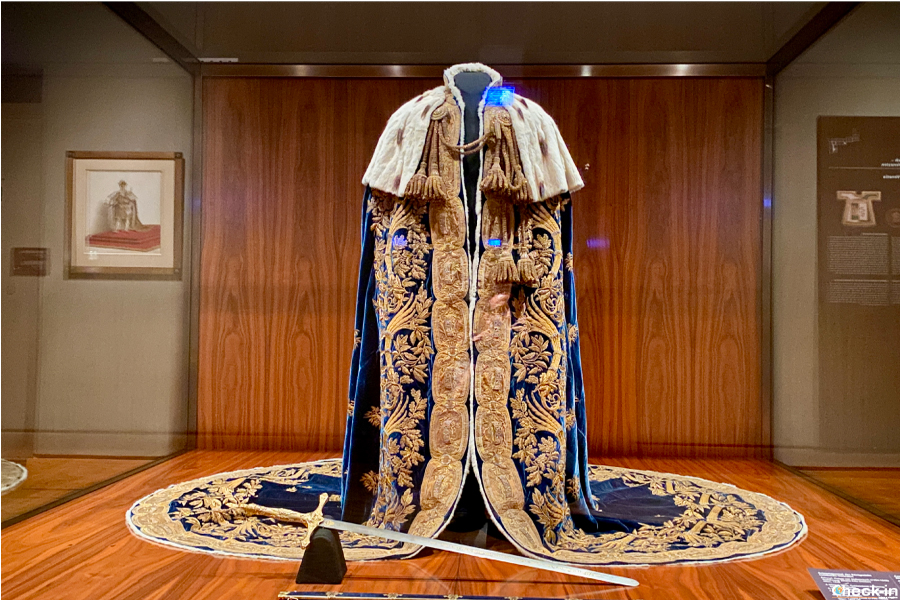
Among the most valuable pieces that can be admired here is the cradle of the King of Rome, made with 280 kg of silver. It was gifted by the city of Paris to Napoleon and his wife Maria Luisa of Austria in 1811 on the occasion of the birth of their son and heir to the throne Francesco Giuseppe Carlo.

There is also a wooden wardrobe in neo-baroque style. In its drawers are stored 139 keys that open as many tombs of the Habsburgs. Most of these are located in the Crypt of the Emperors situated in the basement of the Capuchin Church, a few steps from St. Stephen’s Cathedral (I talk about it in this article).
Other members of the royal house are buried in cities such as Bolzano, Mantua, Seckau, and Linz.

Then it is time for the jewels of the Imperial Treasure. These are objects such as necklaces, brooches, and bracelets that the members of the Habsburgs used and wore to display all their power.
It is impossible not to be enchanted by the emerald Unguentarium which, with its 2,680 carats, is one of the most famous pieces of the collection. Defining its value is difficult; it is almost certainly priceless, even today.
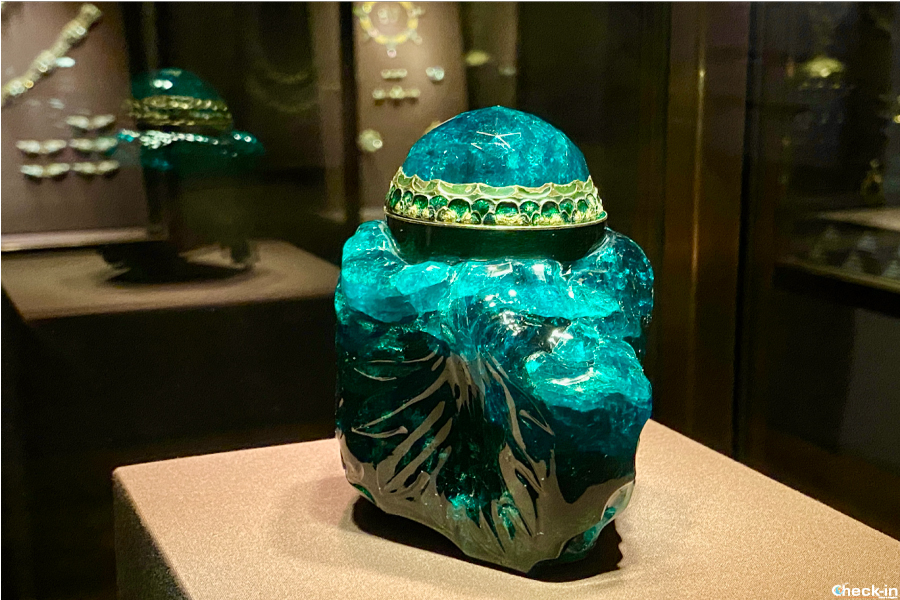
From the conflict that arose between Emperor Rudolf II of Habsburg and the Hungarian Protestants, supported by the Ottoman Empire, comes the Golden Crown used by Prince István Bocskay to crown himself King of Hungary in 1605.
The crown, made by Turkish goldsmiths, has a shape inspired by the mitre worn by Eastern bishops.
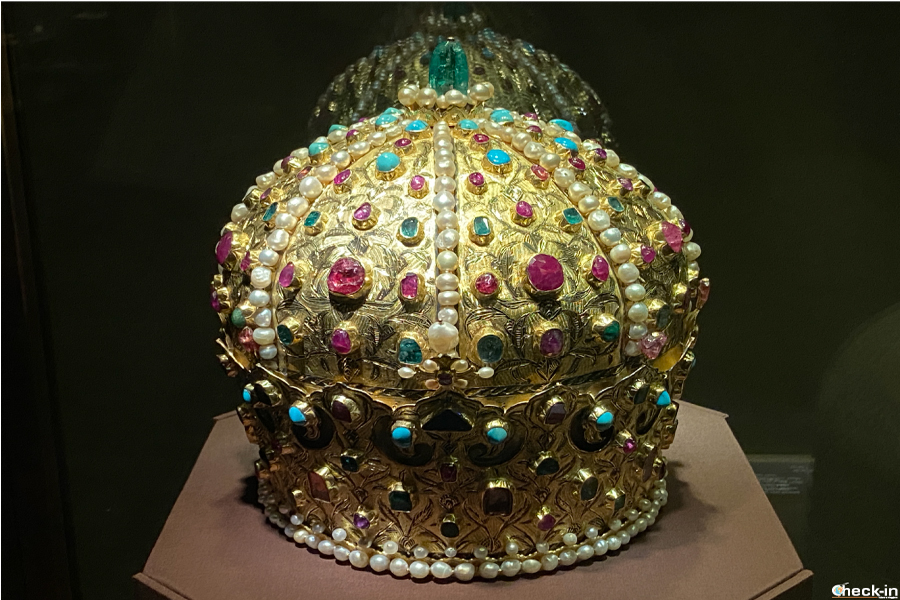
The two treasures displayed in the next room are attributed to Emperor Ferdinand I (1503-1564), who considered them invaluable at any cost. The first is the Agate Cup, probably produced in Constantinople. Since ancient times, its fame has been linked to the legend of the Holy Grail. In fact, when exposing the object to light, the inscription “Xristo” can be seen on the surface of the stone.
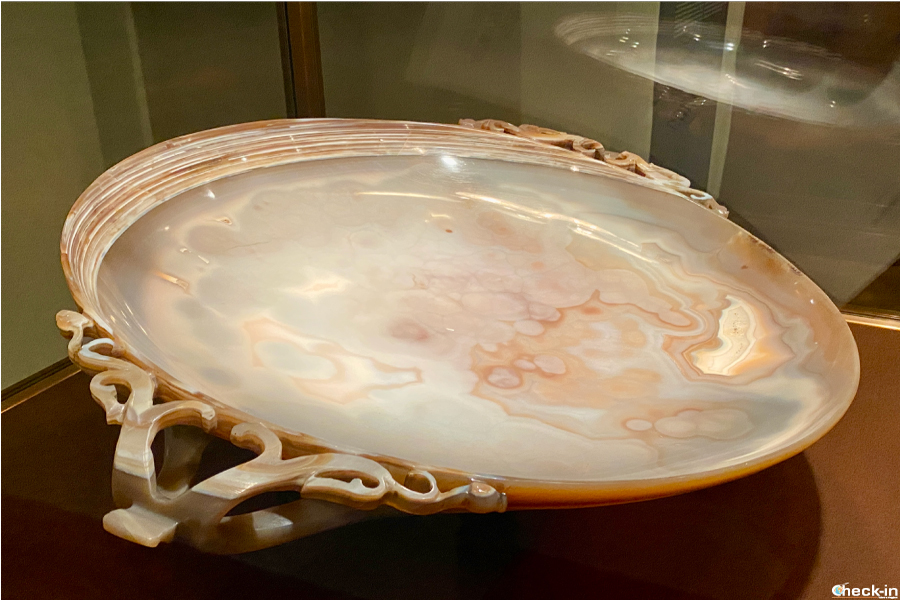
On the opposite side of the room, one can observe what for a long time was supposed to be the horn of the unicorn. This legendary creature was considered an allegory of Christ and, consequently, its horn was thought to possess divine power. For this reason, it was believed that whoever possessed this object would secure power.
The supposed horn, given to Emperor Ferdinand I by the King of Poland in 1540, was traded in European markets at astronomical prices… until it was discovered in the 17th century that it was actually a narwhal tusk!
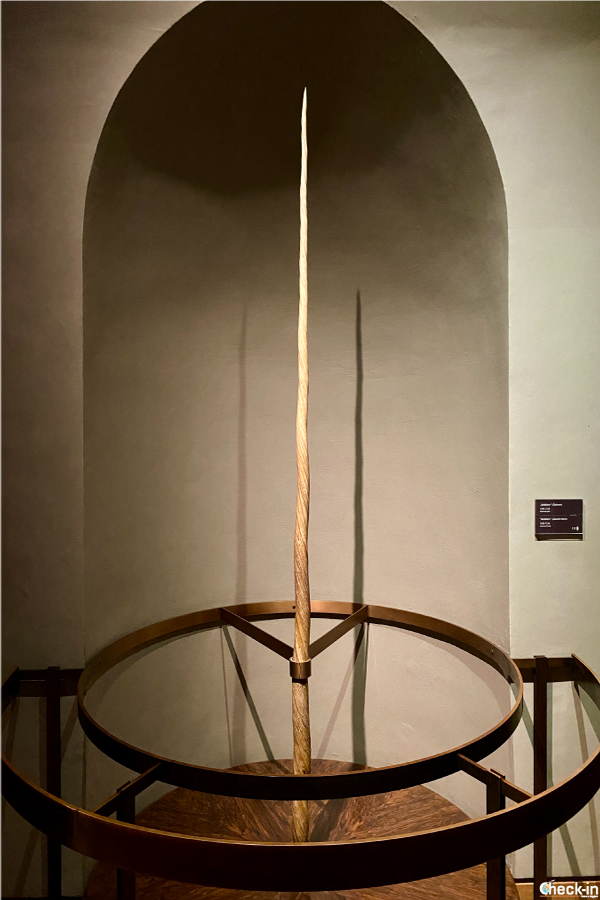
In the rooms of the ecclesiastical treasure collection you can see vestments, sacred images, and relics used in the Habsburg court chapels. Among the objects I saw, the one that struck me the most was the reliquary with a piece of wood from the cross of Jesus Christ.
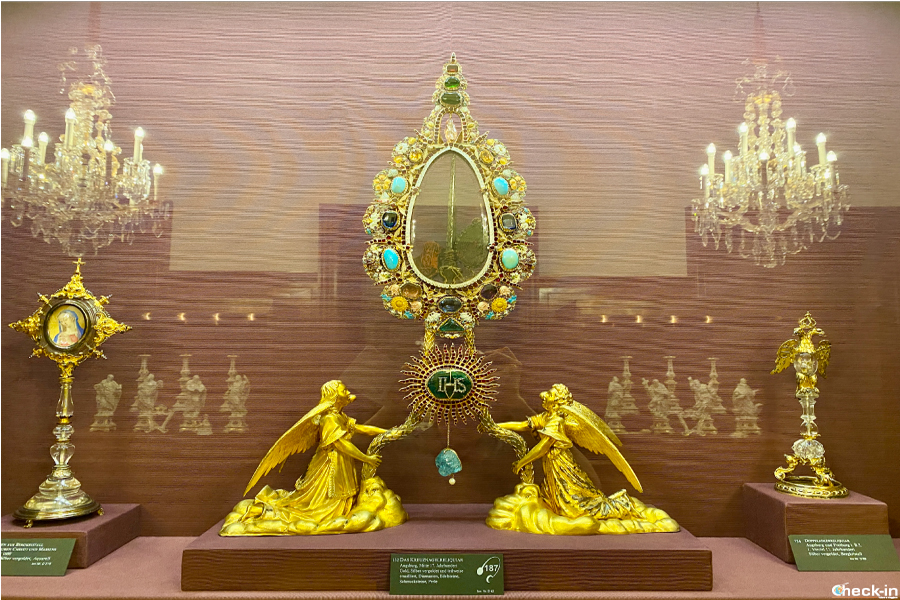
The visit concludes with a true rarity, namely the crown jewels of the Holy Roman Empire. This is indeed the only royal collection from Western Europe of the medieval era that has survived intact to this day.
The pieces that make it up were produced in different periods: the earliest date back to the 8th century, while the more recent ones are from the 16th century. Many of the accessories made in the artisan workshops of Palermo, such as the coronation cloak of Roger II on the throne of the Kingdom of Sicily, are from the 12th-13th centuries.
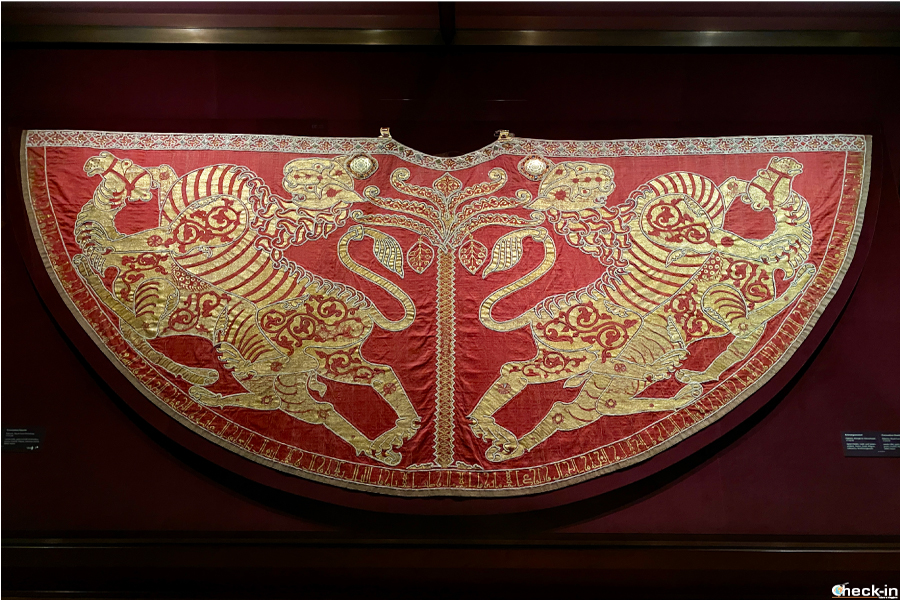
Among the most important symbols of the Holy Roman Empire are the Holy Lance, mentioned for the first time in the 10th century as a guarantee of divine support in battles, and the fragment of the cross on which Jesus was crucified, brought from Byzantium in 1029.
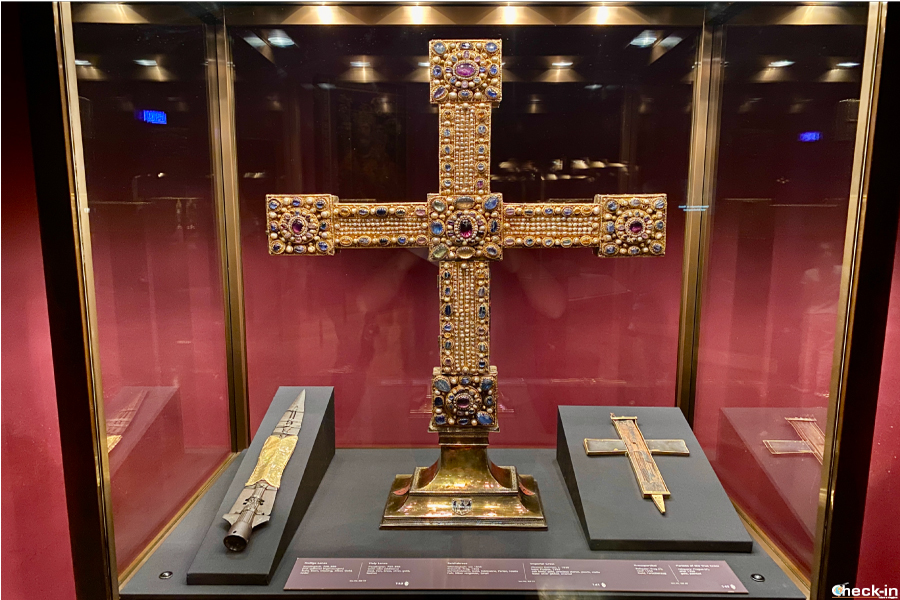
To conclude, it is time for the Imperial Crown, the “main piece” of the Treasury Chamber in Vienna.
For a long time it was mistakenly thought to be the one belonging to Charlemagne. However, it was certainly the highest emblem of the sovereignty of the Holy Roman Empire. Both its shape and decorations represent the spiritual bond between the heavenly kingdom and the earthly one.
